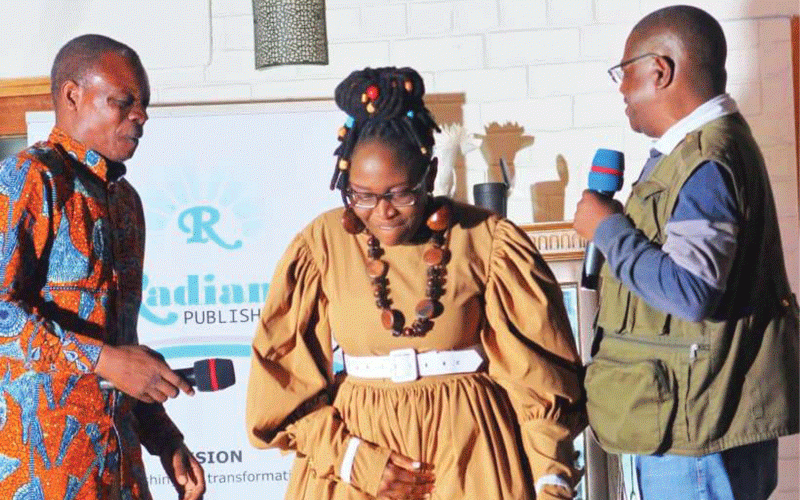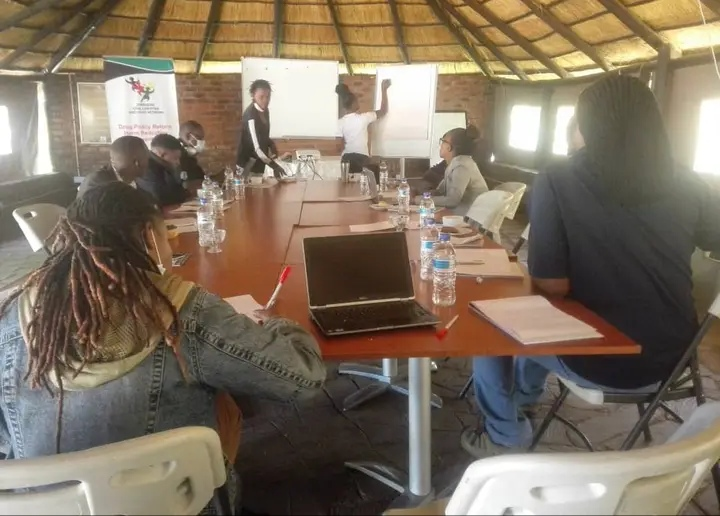
In a follow-up to her thought-provoking conversation with author Memory Chirere on May 10 in Chisipite, Tsitsi Nomsa Ngwenya (TNN) in a second conversation expertly moderated by Professor Matambirofa continues to delve into the themes and cultural significance of her book, Portrait of Emlanjeni. She explores the importance of song, work, and women's spaces in a conversation with Tinashe Muchuri (TM).
TM: When you read the first 11 pages of the book it is all about the description of Matobo or the description of Emlanjeni, the landscape, the hilltops the roads and many other things.
When you get to page 12 that's where we have our first encounter with human beings. The first people we meet are women and these women are in their clubhouse where they are sewing, crocheting and knitting while singing at the same time.
Ma Moyo’s husband Hadebe who is a member of the Chiefs Council decides to pay the women a surprise visit but changes his mind after overhearing an obscene song being sung. What do song, work and women have in women's spaces?
TNN: Thank you Muchuri. Women always work. In my culture, they say ‘umfazi kahlaleli izandla’ (a woman is never idle).
Women labour alongside men in the fields and then return to cook and care for their families. Even when men rest in the shade, women continue working with their hands, knitting or crafting.
Since women rarely have time to rest they make their work easier and lighter by singing. So that’s why you will find a woman singing a lullaby to a crying baby while cooking or attending to other tasks. Women always sing – whether it’s a joyous song, a song of encouragement like those sung at the club, a funeral song or just any other song. Women sing, that is who we are; we are emotional people.
TM: Whilst we are there, in the book, we see that Hadebe wanted to go and see his wife, but when he heard them singing, he had to divert his route.
- Covid-19 disrupted ZIBF impetus
- Book review: A review of Memory Chirere’s Shamhu YeZera Renyu (Outstanding Poetry Book at Nama 2024)
- Literary luminaries gather as Ngwenya explores creativity and identity
- Exploring themes in Portrait of Emlanjeni
Keep Reading
How do women and men maintain these spaces or distance in these spaces?
TNN: In my culture, men and women met at certain activities, but there was always a distinct separation when it came to work. There is work that is meant to be done by women and work meant to be done by men.
In the book you see women at the club or brewing beer, it is just women and you see men going out for Ijumo around the forest while women remain behind singing. So there is always that separation between men and women, but then there are spaces where they are supposed to meet.
Hadebe was supposed to know that if women are doing women's things, he should go away and do men's things instead of following them around.
TM: When we look at this first song, which is on page 13, it looks like it is where the story of the book Portrait of Emlanjeni is introduced. Soon after that, you also meet Zanele. What is the relationship between the song and the story of Zanele?
TNN: Those two scenes actually link very well because what the women are singing about is a warning, but then that same warning was not taken heed of which is what got Zanele into trouble.
So these songs can be lessons to teach the young ones about appropriate behaviour and boundaries at various stages of life. So that is why I wrote the story in that manner.
TM: We had to go a long way through the story until we got to page 28. There, we see Sikhwehle singing a courtship song to Zanele, though she has a boyfriend. How are singing and courtship in the culture of Emlanjeni?
TNN: Singing in courtship has been there since time immemorial in the IsiNdebele culture.
Those who have watched Chaka Zulu might have heard some singing in courtship (Nandi and the king). It's not something new, it is part of our culture. Singing can be used as a way of telling a story, as a warning, as anything really, or as a means of passing a message.
TM: When you look at singing in this modern era, which is a digital era where people are using social media to propose to their loved ones. Where do you place singing in this day and age?
TNN: I don’t know, maybe they send each other songs, but it can never be as strong as what used to happen in our culture and our communities back then. I am not saying we should be stagnant as inevitably evolves and changes. However, I was just recording our history to illustrate that the things you see today have always been present.
TM: We are celebrating Culture Month and coincidentally, we are also discussing culture today. Chirere in one of his readings says Portrait of Emlanjeni is actually like a rain-asking brew manual. What is your take on that?
TNN: Maybe it is because there is a lot that happens in those rain-making brew scenes and my reason for writing that was to preserve culture. I once read at some point where our fellow writer Dr Ignatius Mabasa wrote about people who go overseas and stay there for many years and expect people who remain in the country to preserve the culture and when they return are shocked to find out that cultural values have deteriorated. This is the tragedy that I am trying to address by preserving history and everything through storytelling.
TN: On page 147 we read about Zanele idolising Nelson Mandela and Thabo Mbeki. She is facing her struggles as she is pregnant and is wondering how she will continue with her education as the school might chase her away. What is the connection between the struggles of Mandela, Mbeki and Zanele?
TNN: If you go back to Chapter 1 when she is introduced you notice that she is introduced as someone who is struggling already with mental trauma. At this point, she looks to Mandela, she is trying to emerge out of her struggles and is wondering how she can do it, that’s why she has to think of big characters such as Mandela who got degrees while in prison at Robben Island. She is trying to give herself some positive energy and strength.
Tsitsi's next conversation will be with Aaron Chiundura Moyo.










